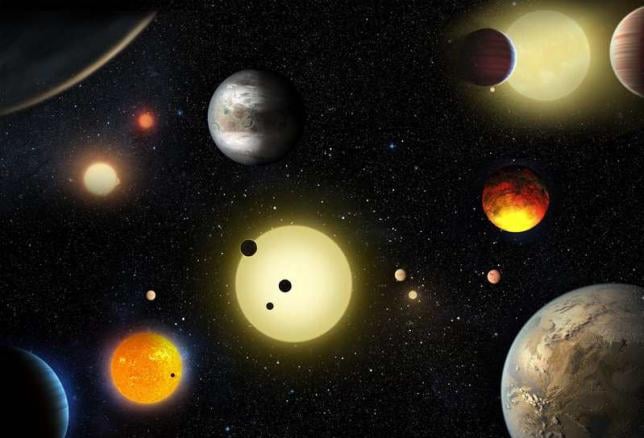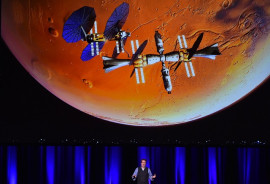
On October 4, NASA stated the probability of “Planet Nine” - “It is a possible "Planet Nine" - a world perhaps 10 times the mass of Earth and 20 times farther from the sun than Neptune,” the organisation said in a statement.
It’s proving difficult to find though. “The signs so far are indirect, mainly its gravitational footprints, but that adds up to a compelling case nonetheless.”
NASA discovers 10 new Earth-size planets that could have life
But some scientists are certain it exists.
"There are now five different lines of observational evidence pointing to the existence of Planet Nine," said Konstantin Batygin, a planetary astrophysicist at Caltech in Pasadena, California, whose team may be closing in. "If you were to remove this explanation and imagine Planet Nine does not exist, then you generate more problems than you solve. All of a sudden, you have five different puzzles, and you must come up with five different theories to explain them."
In January 2016, Batygin published a study in the Astronomical Journal with co-author Caltech astronomer Mike Brown, describing breadcrumbs on Planet Nine’s trail. “Six known objects in the distant Kuiper Belt, a region of icy bodies stretching from Neptune outward toward interstellar space, all have elliptical orbits pointing in the same direction. That would be unlikely - and suspicious - enough. But these orbits also are tilted the same way, about 30 degrees ‘downward’ compared to the pancake-like plane within which the planets orbit the sun.”
While computer simulations of the solar system with Planet Nine show more objects tilt owing to the solar plane – which made Brown realise that five such objects are already known to exist.
An article by a team led by Elizabeth Baily, Batygin’s graduate student, found that Planet Nine could have tilted planets in the solar system during the last 4.5 billion years - reiterating the latter’s theory.
"Over long periods of time, Planet Nine will make the entire solar-system plane precess or wobble, just like a top on a table," Batygin said.
NASA plans emergency spacewalk on International Space Station
Lastly, orbital effect of Planet Nine could be the reason that objects from the distant Kuiper Belt end up polluting inner belt.
"No other model can explain the weirdness of these high-inclination orbits," Batygin said. "It turns out that Planet Nine provides a natural avenue for their generation. These things have been twisted out of the solar system plane with help from Planet Nine and then scattered inward by Neptune."
The only thing left now is to find the planet itself – a feat which Batygin and Brown are already working on. Using the Sabaru Telescope at Mauna Kea Observatory in Hawaii,
But there are scientists who present a different explanation for the evidence citied by Batygin. One analysis by a team led by Cory Shankman of the University of Victoria called the “Outer Solar System Origins Survey” suggests it may be consistent with random distribution of such objects. Yet it does not completely rule out Planet Nine.
If Batygin and Brown manage to find Planet Nine, it may turn out to be our missing super Earth.































1714024018-0/ModiLara-(1)1714024018-0-270x192.webp)









COMMENTS
Comments are moderated and generally will be posted if they are on-topic and not abusive.
For more information, please see our Comments FAQ